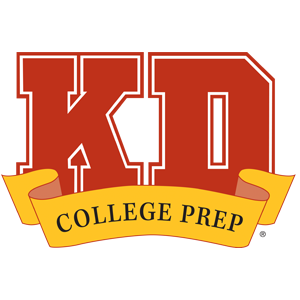It pays to go to college. One estimate found that the value of a bachelor’s degree over the average person’s lifetime is $2.8 million. According to the Social Security Administration (SSA), men who have bachelor’s degrees are expected to earn up to $900,000 more (median lifetime wages) compared to men with high school diplomas, and for women with bachelor’s degrees, that figure is $630,000 more. Gender discrepancies notwithstanding, it’s clear to see that getting a college education is worth it.
Yet, paying for college is challenging for most families, so scholarships are often considered a necessity. It’s common for high schoolers to begin submitting scholarship applications during their junior and senior years. Yet, the question of when to apply for scholarships warrants closer scrutiny. After all, the sooner you begin submitting scholarship applications, the more time you’ll have to submit as many as possible. The more applications you submit, the greater the chances of obtaining more free money for your college education.
Let’s take a closer look at the question of when to apply for scholarships—the answer may surprise you.
Navigate through this article:
A Timeline for Scholarship Applications
K-5th Grade: A Scholarship Guide for Parents
The question of when to apply for scholarships is best answered “as soon as possible.” Would you be surprised to learn that it’s possible to obtain free money for college for students who are just beginning their education? Indeed, there are scholarship opportunities available for learners as young as four years old, as well as older elementary school students.
It’s definitely worthwhile for parents to begin working with their very young children on scholarship applications. If you’re successful in helping your learner obtain scholarship money very early on, then you may find the college planning process later in life to be easier and less stressful.
Start looking for external scholarship opportunities for K-5 students. An external, or outside private scholarship, is one not awarded by a college or governmental agency. These scholarship providers will sometimes hold money in escrow until the student enrolls in college. Alternatively, the funds may be contributed to a 529 savings plan in the student’s name.
Scholarship opportunities for elementary school students often call for artistic submissions, although some may challenge young learners to develop out-of-the-box solutions to real-world problems or complete a community service project. You can find some examples of scholarship funds for young children further down this page.
Middle School: Taking Charge of Your Future Early
Sixth through eighth grade can be a challenging, yet exciting transitional phase in your life. Your social life is likely changing in significant ways, and you’re beginning to exercise greater autonomy over your own life. It’s a great time to start taking charge of your own future whether or not you already started applying to scholarships in elementary school with the assistance of your parents or guardians.
During the middle school years, the scholarship opportunities available to you may mimic the types available to elementary students, such as artwork competitions. However, you’ll also find some based on academic accomplishments, such as essay writing. You may also find some scholarships related to extracurricular activities.
Like the scholarships for elementary students, those for middle schoolers often derive from external sources—not colleges. In addition to checking out the opportunities listed further down the page for middle schoolers, it’s a good idea to ask around. Check with your parents, other relatives, and other acquaintances to see if they’ve heard about any scholarships offered to middle schoolers by companies, civic organizations, and professional associations. Teachers are also great sources when looking for scholarships. Applying to locally or regionally offered scholarships can be a great way to score some free money, as these will likely have less competition.
High School: When to Apply for Scholarships During Your Secondary Years
The traditional answer to the question of when to apply to scholarships has always been “high school,” although, as you can see, there are plenty of scholarship opportunities available to elementary and middle school students. Nonetheless, it’s likely that you’ll spend the most time submitting scholarship applications during your time in high school.
If you didn’t already work on obtaining scholarship dollars as a younger student, don’t fret! It’s never too late to begin the process. In fact, you’re likely to find many more opportunities that you can qualify for as a high school student. At this stage in your education, there are three main types of scholarships to focus on.
- Scholarships available from your school district
- Scholarships available from your chosen college
- Scholarships offered by private entities
School District Scholarships
Let’s take a closer look at the first category. Not all school districts offer their own scholarships, but it’s certainly worth it to investigate this possibility. Stop by your guidance counselor’s office and ask whether the school offers any scholarships—and if so, when is the time to apply? School district scholarships usually focus on criteria involving academics and extracurricular activities. Some school districts will also offer scholarships funded by other entities, such as private companies or local civic organizations located in the area.
Keep in mind that the list of available scholarships offered by your school district can change from one year to the next. You should visit your guidance counselor at the start of each school year to ask about current opportunities.
Another issue to keep in mind is that, while school district scholarships might not always promise big bucks, there is often a lot less competition for them compared to national scholarship opportunities. It’s definitely worth it to spend a few hours writing an essay for a chance to compete for some free cash for school, and even small dollar amounts can add up.
Scholarships Offered By Specific Colleges
As you progress further in your secondary education and begin applying to colleges, you’ll notice that it’s quite common for colleges to offer their own scholarships to incoming and current students. That’s why it’s incredibly important to fill out the FAFSA, regardless of your family’s income level. While these scholarships are likely to have more competition compared to school district-offered scholarships, the potential payoff may be greater.
Colleges may offer scholarships with eligibility criteria pertaining to the following:
- Class rank
- Average test scores
- Socioeconomic background
- Other qualifications, such as demonstration of leadership skills
You may also need to write an essay as part of your scholarship application package.
Private Scholarships
Lastly, you can apply for scholarships offered by private entities. These can be categorized into national and local competitions. National scholarships may promise more money to the winner(s), but there is often a significant amount of competition. Local scholarships may not have as high of a payoff, but the competition will be less intense. It’s not a bad idea to apply to a mix of types of private scholarships—both local and national, low payoff and high.
Private scholarships may be based on virtually any criteria, including the following:
- Academic
- Sports
- Leadership skills
- Non-sports extracurricular activities
- Intended career path/field
- Socioeconomic background
- Other demographics (e.g. minority, military family, parent occupation, etc.)
Private scholarships are often offered annually. However, in some cases, you might only qualify to compete for them during a particular year in high school. This is the case with the National Merit® Scholarship Program, which is based on test scores. To qualify, you must take the PSAT/NMSQT® (Preliminary SAT/National Merit Scholarship Qualification Test) in your junior year.
It’s easy to feel a little overwhelmed by the sheer volume of scholarships out there. Rest assured, no one expects you to apply to every single scholarship you qualify to pursue—that would be a full-time job in itself! Decide how much time you can commit each week to researching opportunities and working on scholarship applications.
You’ll likely find it helpful to maintain a spreadsheet to keep track of all of the information. On your spreadsheet, designate separate columns for the following information:
- Name of the scholarship
- Website
- Deadline for submission
- Application materials required
- Submitted? (Yes or no)
- Result
As a timesaver, you might also want to maintain a separate document to keep track of the scholarships you’ve researched but do not plan to pursue. That way, when you come across a new opportunity, you can do a quick CTRL + F search on your document to see if you’ve already checked out that scholarship before.
Post-Secondary: Continuing Your Scholarship Application Efforts in College
The issue of when to apply for scholarships will still be relevant even after you graduate from high school. As a college student, you can continue to apply for free money to fund your education. Some scholarships designated for current college students must be applied directly to your tuition, whereas others can be used more broadly, such as for the purchase of books.
At this point in your academic journey, you’ll no longer qualify to apply for school district-offered scholarships, but you can still pursue college-offered and private scholarships. At the start of every school year, visit your college’s financial aid office to discuss the opportunities that may be available to you. And be on the lookout for competitions available through your degree program! (In addition, remember to fill out the FAFSA® every year to become/remain eligible for grants).
Where to Start: Scholarship Opportunities by Age Group
Learners can begin submitting scholarship applications as early as four years of age. (Of course, they are likely to need a little help earlier on from their parents with the application process). Use the following resources to as a starting point to explore opportunities for you or your child, keeping in mind that there are lots of other opportunities out there beyond this list. Please note that many scholarships listed below are applicable to multiple grade levels and ages.
Scholarship Opportunities for Very Young Learners
Wondering when to apply for scholarships? It’s virtually never too early! Students as young as four years of age can begin working on scholarship applications. Here are some opportunities to consider for K-5 students:
- Academic Games National Tournament (Grades 4-12)
- Action for Nature Eco-Hero Award (Ages 8-16)
- American Rocketry Challenge (Grades 6-12)
- Angela Award (Grades 5-8)
- Carson Scholars Fund (Grades 4-11)
- CyberFair (Ages 8-19)
- Davidson Fellows Scholarship (PreK-12)
- Destination Imagination (Grades PreK-12)
- Discovery Education 3M Young Scientist Challenge (Grades 5-8)
- Doodle for Google (K-12)
- EngineerGirl Writing Contest (Grades 3-12)
- Exploravision Science Competition (Grades K-12)
- First Robotics Competition (Grades PreK-12)
- Gloria Barron Prize for Young Heroes (Ages 8-18)
- National Marbles Tournament (Ages 7-14)
- National Spelling Bee (Grades 1-8)
- Paradigm Challenge (Ages 4-18)
- Scholastic Arts & Writing Awards (Grades 7-12)
- Stephen J. Brady Stop Hunger Scholarships (Sodexo Stop Hunger Foundation) (Ages 5-25)
- Toshiba/NSTA Exploravision Competition (K-12)
- Young Filmmakers Contest (Grades 3-Age 25)
Scholarship Applications for Middle Schoolers
Now that you’re in middle school, you’re likely maybe charge of your scholarship search yourself, although you shouldn’t hesitate to talk to your parents or guardians if you need guidance. Teachers are also a great resource! Here are a few of the opportunities you could pursue:
- Academic Pentathlon (Grades 6-8)
- American Mathematics Competitions (Grades 6-12)
- Association of Women in Mathematics Essay Contest (Grades 6-12)
- BigFuture Scholarships (Grades 10-12)
- eCyberMission (Grades 6-9)
- Jack Kent Cooke Foundation Young Scholars Program (7th Grade)
- Kaplun Essay Contest (Grades 7-12)
- MathCounts (Grades 6-8)
- National History Day Contest (Grades 6-12)
- NCTE Promising Young Writers (Grade 8)
- Nicholas A. Virgilio Memorial Haiku & Senryu Competition (Grades 7-12)
- Ocean Awareness Contest (Grades 6-12)
- Patriot’s Pen (Grades 6-8)
- Prudential Emerging Visionaries (Ages 14-18)
- Rubincam Youth Writing Competition (Grades 6-12)
- You Be the Chemist Challenge (Grades 5-8)
Scholarship Opportunities Abound for High Schoolers
Wondering when to apply for scholarships in high school? You’re likely to find that most scholarship deadlines will be from September through May. However, you can take advantage of the extra time on your hands during the summer to begin researching the possibilities. You could even start working on your essays during the summer, provided the topics are already posted. Consider the following:
- ABPA Harrington-Arthur Memorial Scholarship (Ages 13-18)
- Academic Decathlon (Grades 9-12)
- All About Education Scholarship (Ages 14 or older)
- American Legion Oratorical Contest Scholarship (Grades 9-12)
- Apprentice Ecologist Awards (Ages 13-21)
- Blacks at Microsoft Scholarships (Grade 12)
- Congressional Art Competition (Grades 9-12)
- Congressional Black Caucus Foundation Scholarships (Grade 11 or older)
- Conrad Spirit of Innovation Challenge (Ages 13-18)
- Do Something Awards (Ages 13-25)
- Generation Google Scholarship (Grade 12 or older)
- GE Reagan Foundation Scholarship Program (Grade 12)
- Herb Alpert Young Jazz Composer Awards (Ages 13-30)
- Horatio Alger Association Scholarships (Grade 11 or older)
- I Have a Dream Scholarship (Ages 14 or older)
- National Merit Scholarship Competition (Grade 11)
- Scholarships for the Children of Siemens Employees (Grade 11)
- Shout It Out Scholarship (Ages 14 or older)
- Spirit of Anne Frank Awards (Grade 12)
- Superpower Scholarship (Ages 14 or older)
- Sweet and Simple Scholarship (Ages 14 or older)
- UNCF Achievement Capstone Program (Grade 12, nomination required)
- USA Brain Bee (Ages 13-19)
- Voice of Democracy (Grades 9-12)
- We the Students Essay Contest (Grades 8-12)
Scholarship Opportunities for Current College Students
It’s never too late to apply for free cash for college, even when you’re already in college. Check out the lists above for scholarships that also apply to your age group, and then review the following possibilities available to your age group. And remember to visit your financial aid office for scholarships available through the college you currently attend.
- $2,000 Nitro Scholarship
- Money Moves
- ScholarshipOwl
- ScholarshipPoints
- See Us, Hear Us: Envisioning Greener Futures
- Too Cool to Pay for School Scholarship
Is it ever too early to apply for scholarships?
There are scholarships available for students as young as four years of age. If your child is younger than four, then yes, it’s a little too early—but not for much longer!
How many scholarships should you apply for?
You will not win every scholarship you apply to. It’s in your best interests to apply to as many opportunities as you can, as this may increase your chances of obtaining free money for your education. However, remember that your primary job as a student is to do well in school and be active in extracurriculars, including community service. If you find that you’re applying to so many scholarships that you don’t have enough time to study or attend sports practices, then you can cut back a bit on your money-finding endeavors.
What increases your chances of getting a scholarship?
Scholarships are awarded based on different factors, such as academic accomplishments, special talents, and test scores. One of the best ways to increase your chances of getting a scholarship is to keep your grades up and thoroughly prepare for standardized tests.
However, you can also capitalize on interests outside of school. For example, if you’re a volunteer puppy raiser for a nonprofit, you could qualify to apply to the Pawsible Puppy Raiser Academic Scholarship.
Many scholarships require essays. Spend more time than you think you need on writing them to ensure they represent your best possible work. Don’t submit your essay shortly after writing it. Set it aside for at least a few days, then reread and edit with fresh eyes.
What is the best month to apply for scholarships?
It’s actually best to search for and apply for scholarships throughout the year. Although most scholarship deadlines are scheduled from September through May, you may find some with deadlines that fall outside this time period. Take advantage of any free time you may have during the summer months to begin researching possibilities and preparing your scholarship applications.
Remember that some scholarships are awarded based on applicants’ test scores. To position yourself as a competitive applicant by doing well on standardized exams, you can take advantage of the test prep programs available at KD College Prep.














































